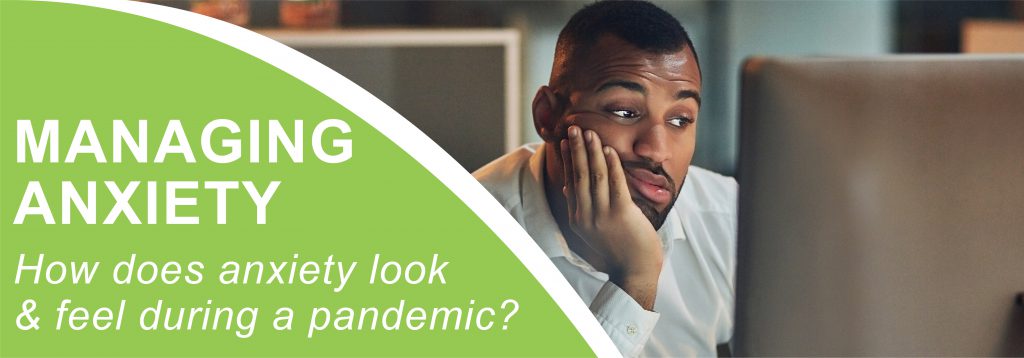
How does anxiety look & feel during a pandemic?
Pandemics can be stressful. Holidays and elections can be stressful. Virtual school, social distancing and not seeing friends and loved ones can be stressful too. All these things together can be a recipe for anxiety. Anxiety and fear can feel overwhelming for both adults and children alike. Sometimes it can be hard to identify anxiety or understand the strong emotions that can come along with anxiety, especially for children.
What does anxiety look and feel like?
- Fear and worry about your own health and the health of your loved ones, your financial situation or job, or loss of support services you rely on
- Changes in sleep or eating patterns
- Changes in behavior
- Difficulty sleeping or concentrating
- Worsening of chronic health problems
- Worsening of mental health conditions
- Increased use of tobacco, and/or alcohol and other substances
What do you do when feeling anxious?
Being there for and taking care of family and friends is important but you should create a healthy balance with caring for yourself too. Here are some tips from the Centers for Disease Control on coping with the stress that comes with living through a pandemic.
- Know what to do if you are sick and are concerned about COVID-19. Contact a health professional before you start any self-treatment for COVID-19.
- If you think you may need a COVID-19 test, save your spot at an IHA testing location: ihacares.com/saveyourspot
- Know where and how to get treatment and other support services and resources, including counseling or therapy (in person or through telehealth services).
- Take care of your emotional health. Taking care of your emotional health will help you think clearly and react to the urgent needs to protect yourself and your family.
- Take breaks from watching, reading, or listening to news stories, including those on social media. Hearing about the pandemic repeatedly can be upsetting.
- Take care of your body.
- Take deep breaths, stretch, meditate
- Try to eat healthy, well-balanced meals.
- Exercise regularly.
- Get plenty of sleep.
- Avoid excessive alcohol and drug use.
- Make time to unwind. Try to do some other activities you enjoy.
- Connect with others. Talk with people you trust about your concerns and how you are feeling.
- Connect with your community- or faith-based organizations. While social distancing measures are in place, consider connecting online, through social media, or by phone or mail.
- Make time for quiet. If you find comfort in prayer or meditation, make time to incorporate this quiet time into your day. As little as 10 minutes can make a difference in your anxiety level.
Quick tips for taking control of your anxiety.
- Take control of your breathing. Try square breathing: breathe in through your nose, pause, breathe out through your mouth and pause, counting to four at each step. Watch Alberto Nacif, MD give instructions on square breathing here: https://bit.ly/2Izy1aL
- Tighten and relax your muscles. In areas where you feel physical tension tighten your muscles and then relax them.
- Go to your happy place. Yes! It does exist! Think of a time or a place in your life where you felt at ease, happy or at peace. Focus on the positive feelings associated with this moment in time.
Know when it’s time to seek medical professional help.
If stress or anxiety get in the way of your daily life several days in a row, it may be time to contact your primary care provider. There are many resources available for managing these feelings and your provider can help you find the best fit for you.

